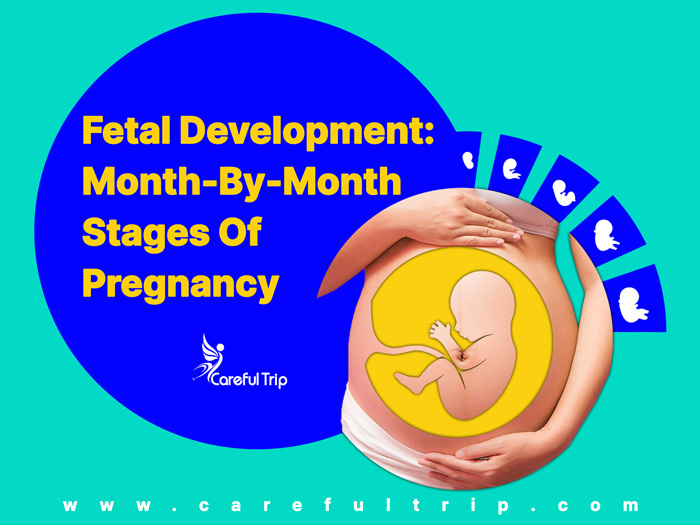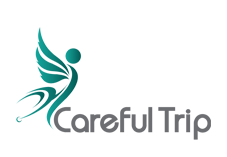
Pregnancy is the humans’ means to reproduce and continue their generation, making it an essential part of everyone’s life. As a result, knowing about how it starts and the changes the mother and the baby go through are vital if we want to have a safe pregnancy and, in turn, a healthy child.
How does pregnancy start?
The egg is released and joined with the sperm on the first day of fertilization. The fertilized egg splits into a large number of cells. This ball of cells attaches to the uterus lining, and this process continues like this:
- Layers and fluid-filled gaps begin to form in the ball of cells.
- The first stage of the afterbirth begins to take shape.
- The ball of cells is known as an “embryo” during this stage of its development.
Your potential baby has already undergone some changes, and the first nerve cells are formed within three weeks. Until the eighth week of pregnancy, it is referred to as an embryo, and then it is referred to as a fetus until the baby is born.
There are 40 weeks to each pregnancy, divided into 3 trimesters. Still, before we concentrate on these periods, it is good to keep in mind that some people cannot rely on pregnancy because of medical conditions or infertility related problems. If you are struggling with such issues or even had undergone pregnancy, but the process failed for any reason, Iranian surrogates can assist you with your pregnancy so that you can have your own child. IVF in Iran is commonly practiced making Iran one of the most frequently chosen medical destinations for infertility treatment in Iran.
For more information read:
First trimester
This first phase lasts 12 weeks from conception (the first three months), during which time the embryo develops into a fetus and begins to resemble a human.
Month 1 (weak 1 through 4)
Through the first month, the fetus takes the form of the letter C, and the organs start appearing. The amniotic sac (water-tight sac) can also be seen around the baby, which is filled with fluid.
- A tube-shaped organ named the placenta develops to feed the fetus and transfer the waste.
- The heart begins as a tube that begins to beat as it develops.
- On the sides of the head, simple structures form. They will eventually become eyes and ears.
- Limb buds, which resemble bumps, begin to form. They will eventually develop into arms and legs.
For more information, read:
Month 2 (weeks 5 through 8)
Because of the rapid growth of the brain during this period, the head is significantly larger than the body. The ultrasound also shows the heartbeat.
- The eyes and ears return to their regular positions on the head.
- Kidneys begin to develop.
- “Rays” appear in the limbs, eventually forming fingers and toes.
- The placenta and the embryo are joined by the umbilical cord (or after birth).
- The neural tube, which eventually becomes the brain and spinal cord, closes.
Month 3 (weeks 9 through 12)
At this time, fists can open and close, and the baby starts moving a bit. By the end of week 10, the embryo is known as the fetus. Sex organs also appear, but it is still challenging to determine the baby’s gender. The possibility of miscarriage falls dramatically.
- The eyes, mouth, and tongue are developing.
- The liver of the embryo produces blood cells.
- Teeth are forming beneath the gums.
- The fingers and toes are distinguishable, but skin webs still join them.
- There are brain waves, and the brain is active.
- The excretory system grows quickly.
All organs and limbs (extremities) are present and will develop further in order to become functional.
Second trimester
Since morning sickness and any other discomfort have disappeared, this period is considered the most enjoyable time of your pregnancy. The fetus’s movement can be felt, and the heartbeat can be heard clearly through an ultrasound. The fetus’s sex is also recognizable. And the mother may start thinking about the type of birth she wants.
Month 4 (weeks 14 through 16)
your pregnancy starts to look more evident at this stage. The Baby’s movement gets stronger.
- sex organs are almost fully developed and distinguishable.
- Since the fetus has vocal cords now, the baby can cry mutely. Perhaps unborn babies will even begin sucking their thumbs.
- The musculoskeletal system has matured, and the nervous system gains control of the body.
- The fingers and toes are distinct. Eyelids, brows, eyelashes, nails, and hair growth.
Month 5 (weeks 17 through 20)
At this stage, you can feel the baby moving, which is called “quickening.” As the legs grow, the head now seems smaller. The fetus can suck their thumb now.
- The bones are rapidly gaining calcium.
- An oily coating protects the fetus’s skin.
- On the head, hair begins to grow. Lanugo, a soft fine hair, covers the shoulders, back, and temples.
Month 6 (weeks 21 through 24)
At this point, you could see the fetus’s red wrinkled skin underneath the blood vessels are visible.
This month is considered the point of viability, which means your baby can survive out of the uterus. However, it needs special and intensive care for months.
- The fetus reacts to sounds by moving or increasing its heart rate. If the fetus hiccups, you may notice jerking motions.
- Finger and toe prints can be seen. The eyelids begin to part, and the eyes open at this stage.
Month 7 (weeks 25 through 28)
The fetus continues to develop and store body fat reserves.
- Hearing is fully developed at this point.
- The fetus moves around frequently and responds to stimuli such as sound, pain, and light.
- The amniotic fluid starts to deplete.
Third trimester
You are in the last months of your pregnancy and looking forward to having your baby. But you need to remember that these last months are vital for the baby’s total development. And despite popular culture, your pregnancy may last ten months, which is normal.
Month 8 (weeks 29 through 32)
Your baby is still preparing eagerly to get ready to meet you. And you may start counting down the days.
- most of the organs are fully developed except the lungs
- brain is growing rapidly
- the fetus is still reserving body fat
Month9(weeks 33 through 36)
The baby does not move as much as before because there’s not much space left. The skin is less red and wrinkled.
- the fetus is still maturing
- the lungs are almost developed
- the fetus can blink, turn their head, grasp, etc.
Month 10 (weeks 37 through 40)
You are now expecting to go into labor at any time. Not many movements are felt now due to the tightness of space. You also may feel discomfort since the baby has changed position to get ready for the birth.
For more information, read:

